Donator and donation – towards the Museum of Croatian paintresses born in 19th century
Exhibition concept: Žarka Vujić, PhD
Curator: Vesna Vrabec
Exhibition design: Željko Kovačić
Computer games: Josip Mihaljević, Link2
Poster design: Miljenko Gregl
 Donating collections to the City of Zagreb is a cultural activity that we have been following since 1946. In this way, the Zagreb heritage has been enriched by thirty private collections and memories. In order to provide professional care and management for them, they are given to the care of certain museums. The Zagreb City Museum, a unique museum institution whose task is to represent the history and identity of the City, takes care of eight of them.
Donating collections to the City of Zagreb is a cultural activity that we have been following since 1946. In this way, the Zagreb heritage has been enriched by thirty private collections and memories. In order to provide professional care and management for them, they are given to the care of certain museums. The Zagreb City Museum, a unique museum institution whose task is to represent the history and identity of the City, takes care of eight of them.
The collection of the Croatian paintresses born in the 19th century (1073 works of art) has been donated by a literature professor and collector Dr. sc. Josip Kovačić to the City in 1988, provided that he manages it until he dies. In 2009, the Zagreb City Museum started to help him. In anticipation of a final settlement for accommodation and exhibition of this donation as well as an hommage to the donator who has recently left us, we have prepared this exhibition.
The exhibition consists of seven basic sections.
The introductory section starts in front of the entrance into the attic exhibition space. It speaks about the activities regarding the donation to the City and about the collector Josip Kovačić (Čakovec, 1935 – Zagreb, 2017). We were helped here also by the black-and-white photos from the collector’s life. The end point of the introduction is the collector’s portrait and the painting Bells by Mira Klobučar that needs to be considered as the first purchased work of the collection.
The constant tendency of Josip Kovačić to collect as many self-portraits of the Croatian paintresses as possible is covered by the second thematic unit. For him, the self-portraits were not only the works of art, but also a manner of remembering the looks and fine art expressions of the inner states of the women artists. Wherever possible, we combined them with the portraits of other members of the family or the layout of the home surrounding.
The collector found it always important to study the education process of the women artists. It is well-known that throughout history they experienced a lot of difficulties. In Croatia, in the mid 19th century they were taught by the travelling painters, but also they themselves organised a course in Zagreb (School at Two Karolinas). In 1907, the Academy of Fine Arts was founded, but the women artists continued to attend education at the craft schools, academies, and courses abroad. The model of education meant a long time of learning, interruptions, and changing of institutions.
The fourth section is dedicated to the painting techniques. Josip Kovačić studied the materiality of each single work of art from his collection to the tiniest detail. Thus, he came across important data about the working methods of the women artists. He collected sketches, notebooks for drawing, unfinished works of art, etc. He collected the working aids of the women artists – easels, boxes for colours, palettes, etc. He saw the works of art always in the context of their creation.
Women artists were often perceived as masters of applied arts. This was along the lines of thinking of the critic Kosta Strajnić that women are much more independent in applied arts, crafts and interior design (1916). However, the truth was different – education for applied art provided women employment. By designing utilitarian objects, drawing for the faculties and museums, and designing scenographies, they could provide for themselves without getting married.
The sixth section was created according to the wish of the donator to make an attempt at telling a brief history of the Croatian art until the middle of the 20th century through the exhibited works of the women artists. By this, as is usual for the collectors of the works of art, the collector wanted to increase the historical and artistic value of his collection. The exhibition section starts with the examples of Biedermeier portrait painting and ends with the works by Vera Nikolić and Nevenka Đorđević who had the strength to deal with the avantgarde tendencies in the mid 1950s.
The last section of the exhibition is placed in the northern two-storey room. It is dedicated to a special sub-collection – the works of Slava Raškaj (1877 – 1906). Josip Kovačić studied passionately for a long time the biographic data and the opus of this well-known Croatian aquarellist. This resulted not only in the creation of a sub-collection of her works but also in a unique manuscript – Dead Ends in the Life of Slava pl. Raškaj. Based on this manuscript we designed the presentation in this room.
Dr. sc. Žarka Vujić

Priska Kulčar, Gardens of love (portrait of J. Kovačić), 1993, oil on canvas, 100 x 73.5 cm

Nasta Rojc, Self-portrait in a white shirt, ca 1925, oil on canvas, 60.8 x 50.8 cm

Dora Car, Self-portrait, 1912, oil on canvas, 33.5 x 49.5 cm

Anka Krizmanić, Self-portrait, 1916, crayon on paper, 34.5 x 40.7 cm

Vera Nikolić Podrinska, Self-portrait, 1955, oil on canvas, 33.5 x 44 cm

Zdenka Pexidr-Srića, Self-portrait, 1912, coal on paper, 43.6 x 59.9 cm

Slava Raškaj, Ozalj in winter, 1898/9, watercolour on paper, 15.8 x 22.1 cm
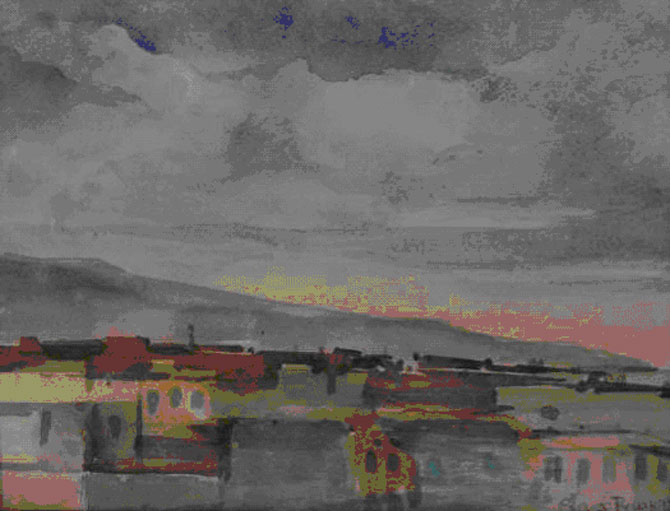
Slava Raškaj, Venice, 1899, watercolour on paper, 25.8 x 33 cm
Pictures from the exhibition
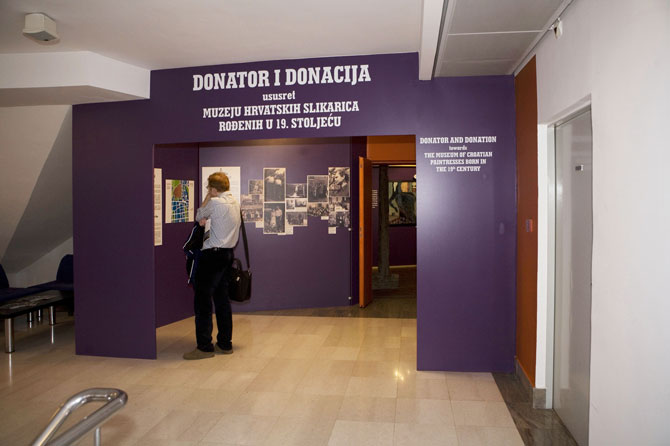
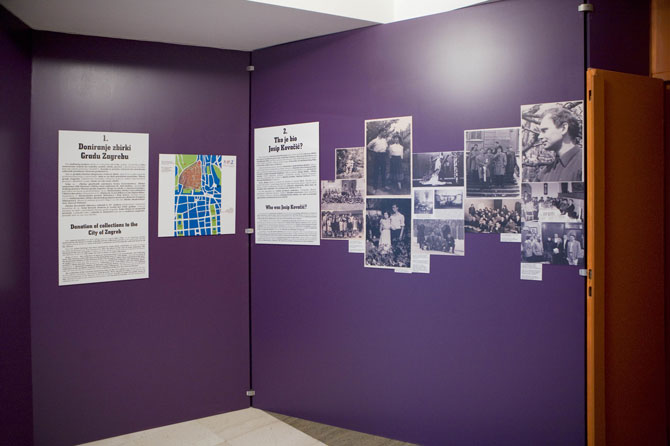
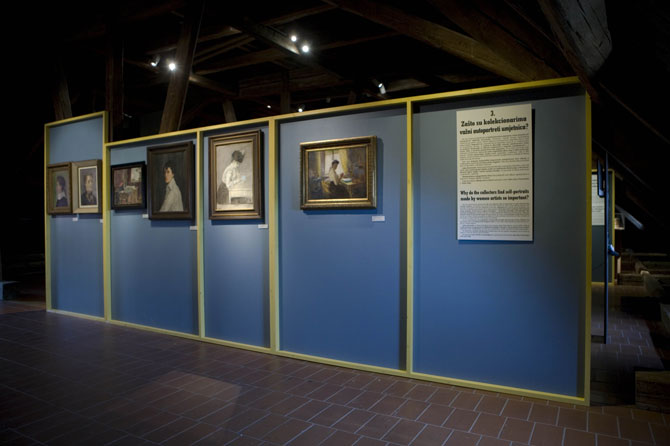






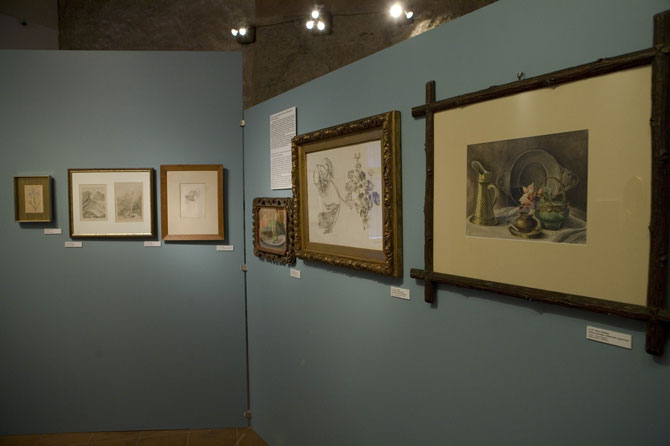
photo Miljenko Gregl, ZCM

